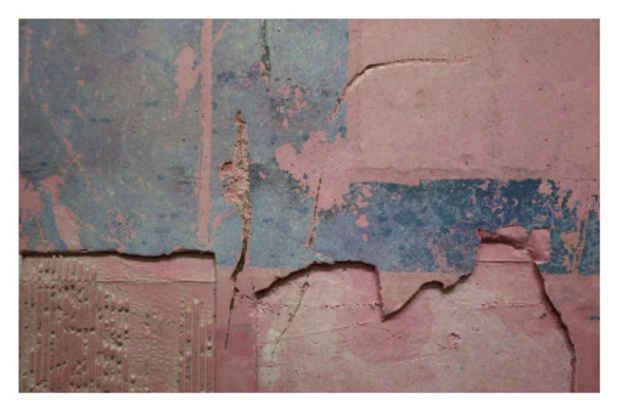“Surrogate Histories / Projected Remains” Exhibition
Project: ARTspace

[Image: Levan Mindiashvili "(img____.jpg)" (detail), (2018)]
This event has ended.
“Surrogate histories/projected remains” is a group show exhibiting work by 5 non-native NYC artists. The works in the show all strive to preserve something that no longer exists or never existed. They mimic ancient artifacts, rituals and mythologies. Or they use the language of the discipline of archeology; its’ methodology of excavating and revealing layers of past lives, of collecting, of restoring broken art and objects and displaying the findings. Humans have a tendency to accumulate objects or try to preserve lost things. Often we place value on things that had no value in their time or display them completely out of context, thus obscuring any original meaning and superimposing ours.
The work in “Surrogate histories/projected remains” is asking questions about the value and truthfulness of recording history. It also asks questions about our place in the larger human history; What will remain intact and what will be re-fabricated by future archeologists? What will be the material evidence of our existence? How much of our reality will be lost?
“Surrogate histories/projected remains” is a curatorial art project by Monika Zarzeczna which she sees as an extension of the conversations that emerged from studio visits conducted with the artists in the show.
Marisa Tesauro’s “La maledizione dell’Eco e Pezzi Vari” displays clay objects that resemble maquettes of floorpans of excavated ancient buildings. The objects themselves are in fact reproductions of highly specific mass-produced packaging of electronic devices like SONOS. By reproducing the packaging of these objects of obsolescence by hand in clay and occasionally manipulating their original size, Tesauro immortalizes them and shines a light on their stories, giving their brief existence a place in our history.
Levan Mindiashvili’s“Untitled(Unintended Archeology) and (img___.jpg) use the language of archeological sites and found, re-purposed materials like concrete remnants from construction sites and insulation foam but are in fact hand produced in pigmented hydrocal plaster. The works resemble partially demolished buildings, laying bare previously private lives of unknown individuals but are also attempts to put weight to the fleeting idea of home or place or the temporality of a thing. In (_mg_3119_copy.GIF) Mindiashvili also questions the long lasting form of a work by reproducing digital images of his painting of the same title in the physical, pixelated form of Jacquard, blurring and confusing the idea of the original and how it will continue to exist.
Pavel Kraus’ “Offerings” reenact the mummification process and the ritual of storing away remnants of a life for later, or for the gods. The objects seem culturally out of place and are false. They are mere replacements of the real thing or, in the case of the marble “Offering/Redemption” a copy of a copy even; the piece immortalizing a ritual object that never existed. But contemplating mortality the objects reveal themselves to be born out of something completely genuine: a personal need of ceremony.
Adam Shecter’s “New Atlantis” draws from the images of the famed lost city as well as the myth of Orpheus. This work alludes to the archetypal symbols and themes of these ancient stories: a flood, the separation of lovers, the splitting of worlds. There is a strong feeling of becoming lost, of drowning in the lights of a contemporary city and trying to find a place for this loss of self.
Zarzeczna’s “Construct-Reconstruct, I, II & III” look like distorted reconstructions of sculptures of the body. Though recognizable they are unidentifiable, remaining in a stage of the reconstruction of the idea of something, rather than the thing itself. They also take from historical artifacts displayed in museums where the conservation process and the support structure of the display are often more present than the object itself. “Construct-reconstruct I, II,&III” become a metaphor for out inability to truthfully reconstruct or even remember.
Media
Schedule
from June 26, 2019 to August 16, 2019
Opening Reception on 2019-06-26 from 19:00 to 21:00
Artist(s)
Pavel Kraus, Levan Mindiashvili, Adam Shecter, Marisa Tesauro, Monika Zarzeczna